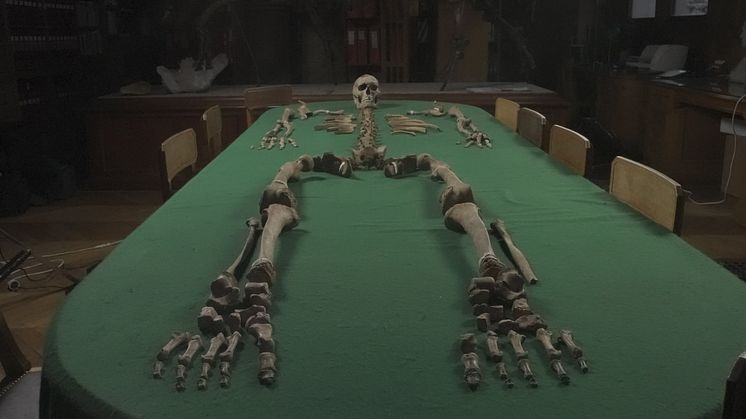
Image -
Remains of a man buried in a rich grave.
Remains of a man buried in a rich grave in Téviec. Individuals buried together did not have close biological kin relationships. An exception to this pattern is the individual buried in a grave in Téviec who had closer biological kin links to at least two (sampled of a total of five) of the individuals buried above him, while these were not closely related with each other. This finding corroborates the importance and singularity that K6(16)-tev003 could have had based on the arrangement of the grave and associated archaeological material. Moreover, osteological analysis revealed two microlithic armatures, likely from a projectile weapon, punched in the sixth and eleventh dorsal vertebrae, the first of which may have resulted in immediate death by severing the aorta (1). His mandible also bore an old, well-healed fracture, which has been suggested as evidence of a lifestyle marked by a certain violence.
go to media item
- License:
- Media Use
The content may be downloaded by journalists, bloggers, columnists, creators of public opinion, etc. It can be used and shared in different media channels to convey, narrate, and comment on your press releases, posts, or information, provided that the content is unmodified. The author or creator shall be attributed to the extent and in the manner required by good practice (this means, for example, that photographers should be attributed).
- Copyright:
- Vivement Lundi! / France Télévisions, from "Téviec, Meurtre au Mésolithique" by Hubert Béasse.
- File format:
- .jpg
- Size:
- 4240 x 2384, 2.89 MB